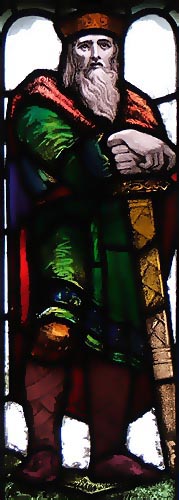While Adrian was abbot of a monastery near Naples, Pope Vitalian twice offered him to go to England and become Archbishop of Canterbury. In each case he declined, suggesting others: first a nearby monk named Andrew, who also declined, then Theodore of Tarsus, who accepted the role. Adrian had been through Gaul before, and Vitalian that Adrian would accompany Theodore to England.
The journey took them awhile. They left Rome on 27 May 668 and went by ship to Marseille, then to meet with Archbishop John of Arles while applying for passports of safe conduct through Gaul. These had to come from Ebroin, the Mayor of the Palace under Clotaire III. By the time they got to the north of France it was winter, and since travel would be more difficult, they waited until spring. Adrian went to stay with Bishop Emmon of Sens, then Bishop Faro of Meaux. (Theodore stayed with Bishop Agilbert of Paris.)
When King Ecgberht of Kent sent a message to Theodore in the spring of 669 to hurry up, he went to England, arriving in May. Adrian was detained on the orders of Ebroin, who suspected that Adrian might be an emissary of the Byzantine emperor, Constans II, intending to disrupt the Franks.
Adrian eventually made it to England and became abbot of Saint Peter's and Saint Paul's in Canterbury, administering the place for 39 years. Adrian and Theodore together made Canterbury a center for learning, teaching Greek as well as Latin and several subjects that were later part of the Trivium and Quadrivium of medieval universities. Writing later, Bede praised the two for their love of teaching and the spread of learning.
After Adrian died in 709, miracles were reported at his tomb.
Why did Ebroin suspect Adrian of being an agent of Emperor Constans? What could the Byzantine emperor do that would threaten Gaul? Let's look at that tomorrow.











